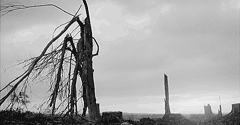Abstract
Violence is experienced by many people first hand. While some of these people are later allowed to serve as witnesses through memorialization, many are not. Often, those excluded encompass whole categories of people: victims, perpetrators, soldiers, women, etc. Who is allowed to serve as a witness during memorialization often depends on a range of factors, such as timing and context. But the very definition of a witness also shapes what outcomes are possible from memorialization. This article looks at three members of the International Coalition of Sites of Conscience from three different contexts (Afghanistan, Bangladesh, and Italy), and examines how their varying definitions of what a witness is are not only rooted in the needs of their societies, but also shape their memorialization and its impact on those societies.
Creative Commons License

This work is licensed under a Creative Commons Attribution 4.0 License.
Recommended Citation
Paynter, Braden; Hoque, Mofidul; Marifat, Hadi; and Monicelli, Elena
(2016)
"Witnesses and the Changing Goals of Memorialization,"
Landscapes of Violence: Vol. 4:
No.
1, Article 5.
Available at:
https://scholarworks.umass.edu/lov/vol4/iss1/5
